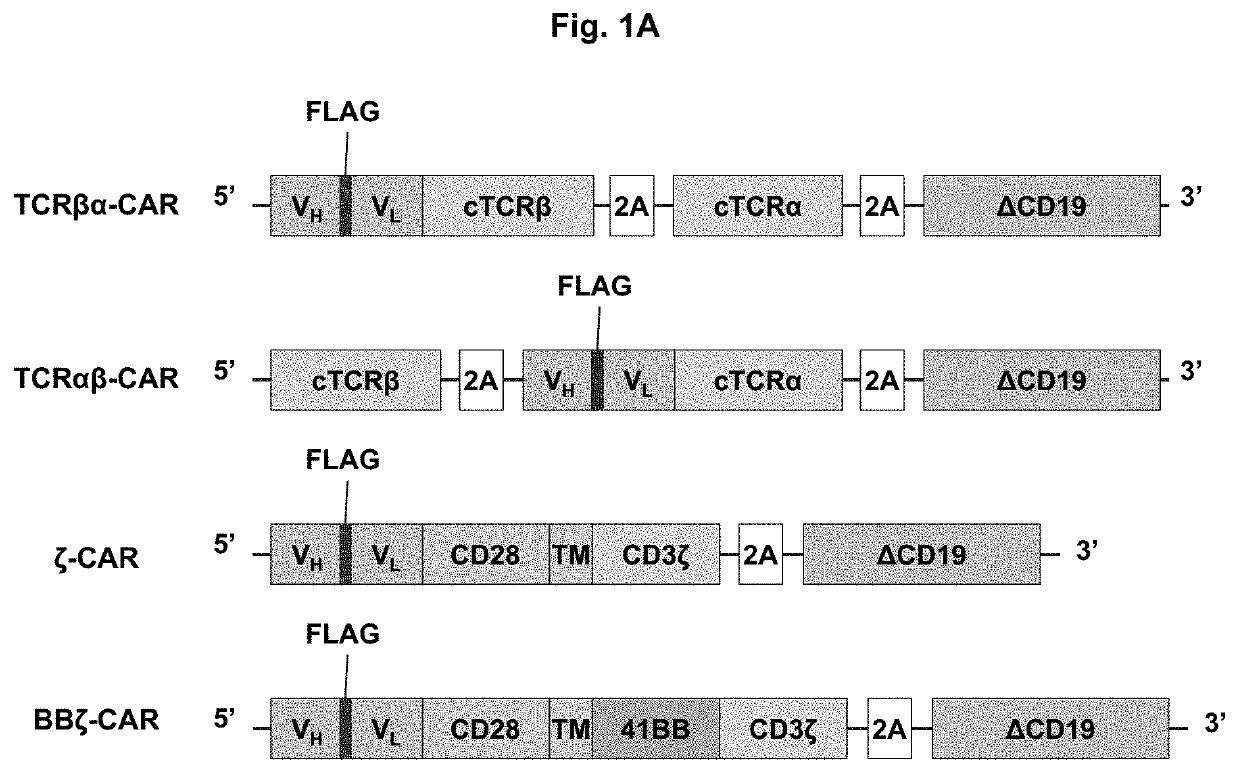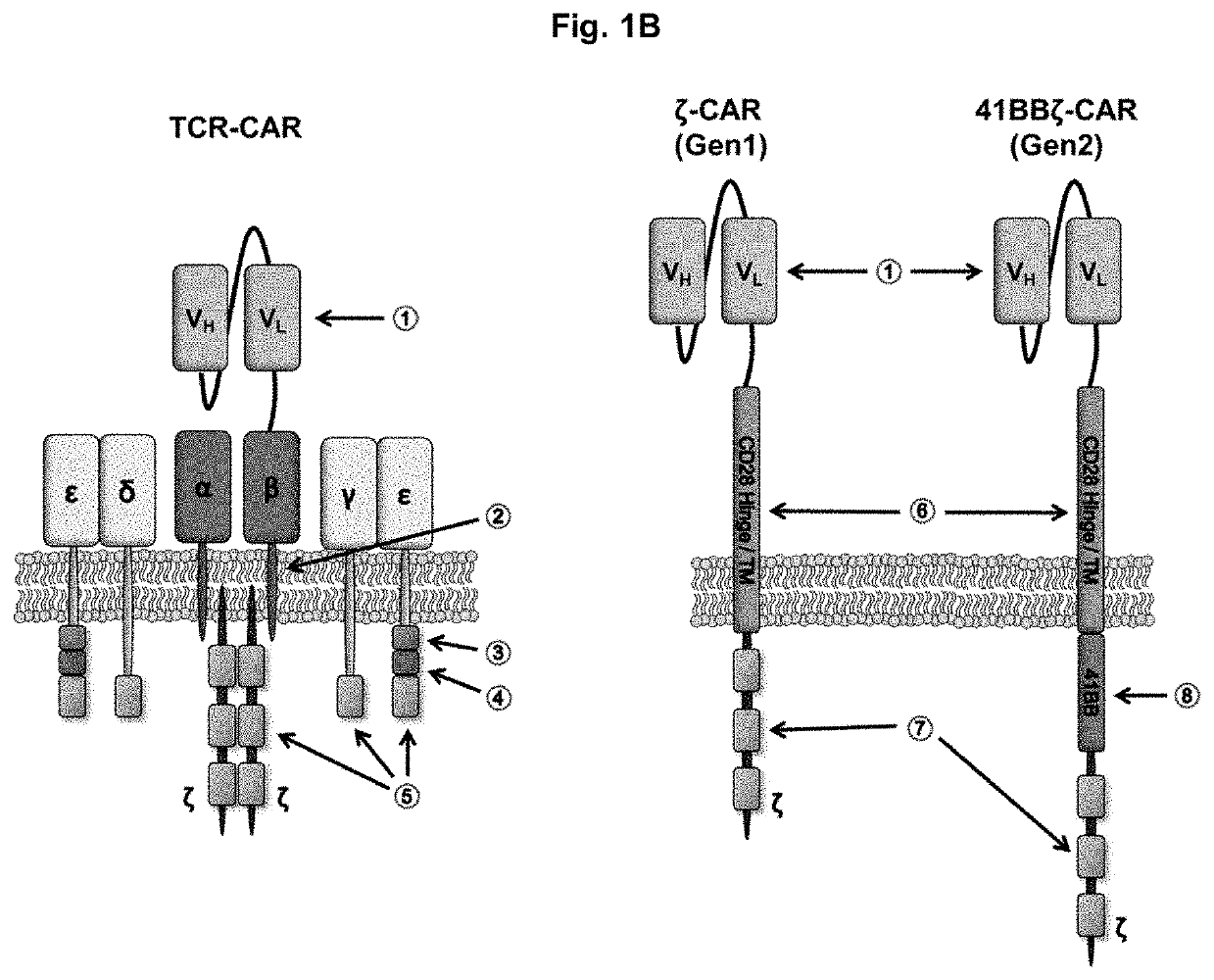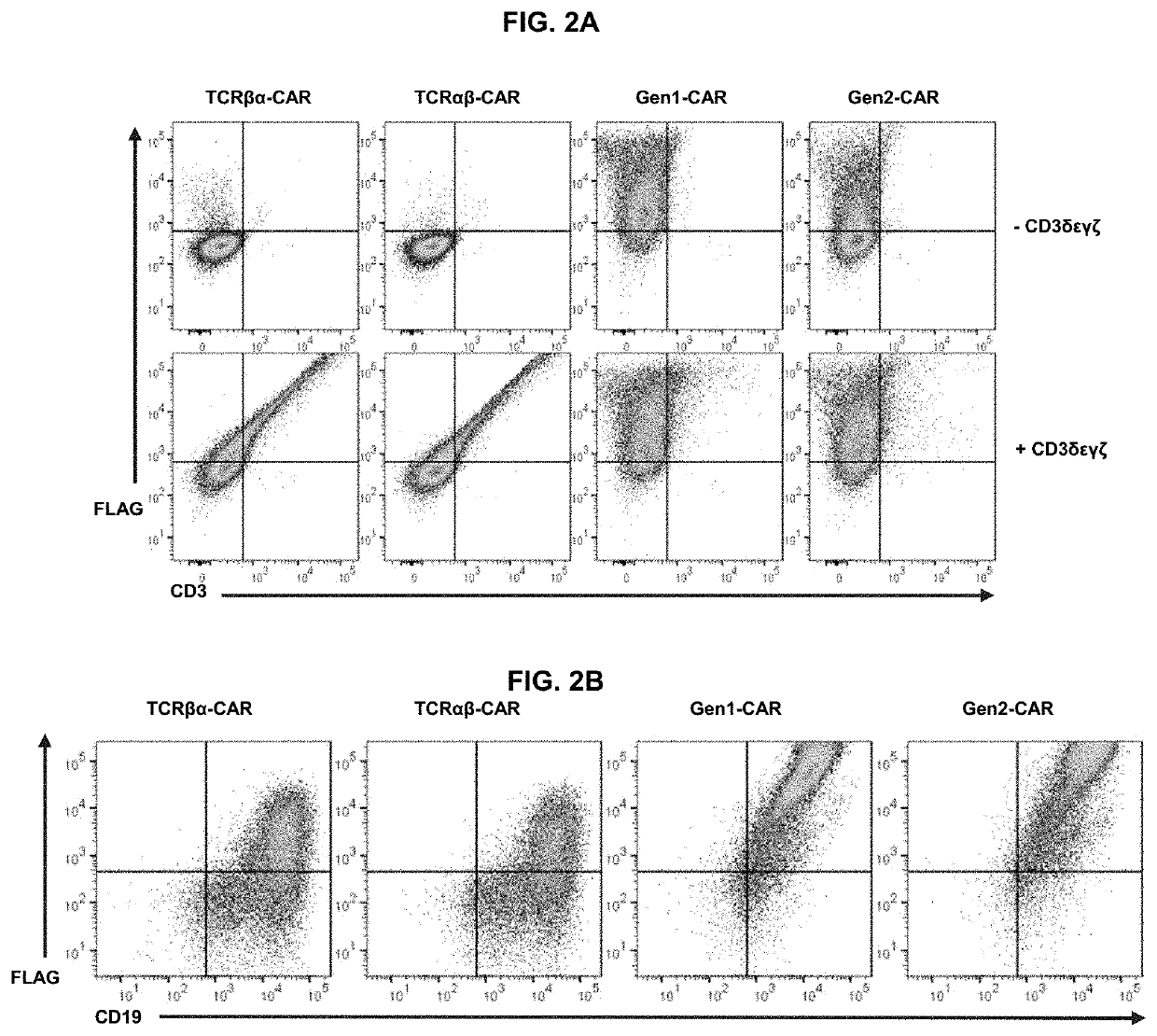Eliminating MHC restriction from the T cell receptor as a strategy for immunotherapy
a technology of t cell receptor and mhc restriction, which is applied in the field of chimeric antigen receptors, can solve the problems of high toxicity of car therapy, clinical limitations of cars, and unregulated surface expression and function of cars
- Summary
- Abstract
- Description
- Claims
- Application Information
AI Technical Summary
Benefits of technology
Problems solved by technology
Method used
Image
Examples
example 1
TCR-Based CAR Constructs
[0085]To generate a novel CAR that merges the antigen recognition capacity of currently used CARs with the functionality of the endogenous TCR complex, a scFv was fused to the constant region of TCRβ or TCRα. The scFv was based on the humanized anti-disialoganglioside (GD2) clone 3F8 and contained an embedded FLAG epitope tag to allow for detection of CAR surface expression. Each scFv-TCR chain was co-expressed with the constant region of the opposing TCR chain to create TCRαβ-CAR and TCRβα-CAR (FIG. 1A). To avoid mispairing with endogenous TCR chains, a second disulfide bond was added between the TCRα and TCRβ chains, which can be achieved by adding a single cysteine on each receptor chain to promote the formation of an additional interchain disulfide bond. For comparison, first and second generation CARs were also generated (FIG. 1A). As a marker for transduction, each construct also contained cDNA encoding the extracellular and transmembrane domains of CD1...
example 2
Surface Expression of TCR-Based CARs
[0086]The biochemical structure of the TCR complex prohibits the surface expression of individual chains, so each CAR was tested to determine whether it was dependent on CD3 for surface expression. HEK 293T cells were transfected with cDNA encoding each CAR alone or co-transfected with cDNA encoding CD3c, CD3δ, CD3γ, and CD3ζ (FIG. 2A). Gen1-CAR and gen2-CAR could be detected on the cell surface independently of the CD3 chains. By contrast, TCRαβ-CAR and TCRβα-CAR could only be detected on the cell surface if the CD3 chains were co-expressed, demonstrating that the TCR-based CARs are incorporated into the endogenous TCR complex.
[0087]Since T cells tightly regulate CD3 expression, surface expression of TCR-based CARs was hypothesized to be constrained by the availability of CD3, whereas surface expression of both gen1-CAR and gen2-CAR would be unrestricted in T cells. Indeed, primary human T cells transduced with the TCR-based CARs had significantl...
example 3
T Cell Activation by TCR-Based CARs
[0088]To test whether the TCR-based CARs could be used to activate T cells, TCRβα-CAR and TCRαβ-CAR were expressed in Jurkat T cells. As a negative control, a cell line was generated expressing the ΔCD19 empty vector. Cells were stimulated with anti-CD3ε, GD2hi M21 melanoma cells, GD2− HeLa cells, or left unstimulated. M21 cells could induce both CD69 expression and ERK1 / 2 phosphorylation in TCRβα-CAR T cells, but not TCRαβ-CAR T cells or ΔCD19 T cells (FIG. 3). Because directly fusing the scFv to the TCR could constrain the orientation of the scFv, constructs were generated in which a flexible (Gly4Ser)3 linker was inserted between the scFv and the TCR constant region. Addition of the linker did not affect T cell activation for either TCR-CAR construct (FIGS. 9A and 9B). These data indicate that TCR-CAR functionality is dependent on the scFv being fused to TCRβ and the presence of the (Gly4Ser)3 linker did not affect activity. Based on these resul...
PUM
| Property | Measurement | Unit |
|---|---|---|
| concentration | aaaaa | aaaaa |
| volume | aaaaa | aaaaa |
| diameter | aaaaa | aaaaa |
Abstract
Description
Claims
Application Information
 Login to View More
Login to View More - R&D
- Intellectual Property
- Life Sciences
- Materials
- Tech Scout
- Unparalleled Data Quality
- Higher Quality Content
- 60% Fewer Hallucinations
Browse by: Latest US Patents, China's latest patents, Technical Efficacy Thesaurus, Application Domain, Technology Topic, Popular Technical Reports.
© 2025 PatSnap. All rights reserved.Legal|Privacy policy|Modern Slavery Act Transparency Statement|Sitemap|About US| Contact US: help@patsnap.com



